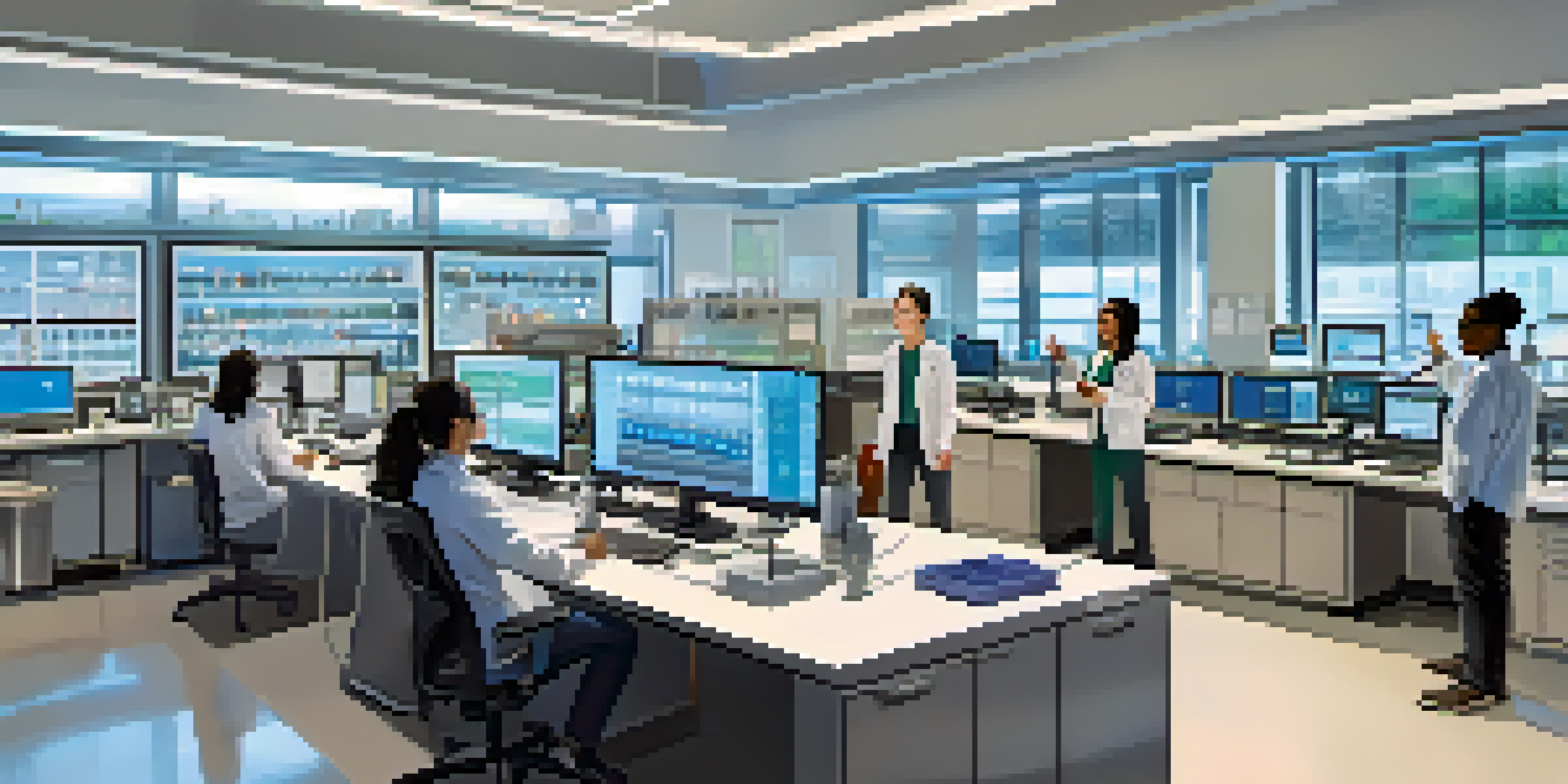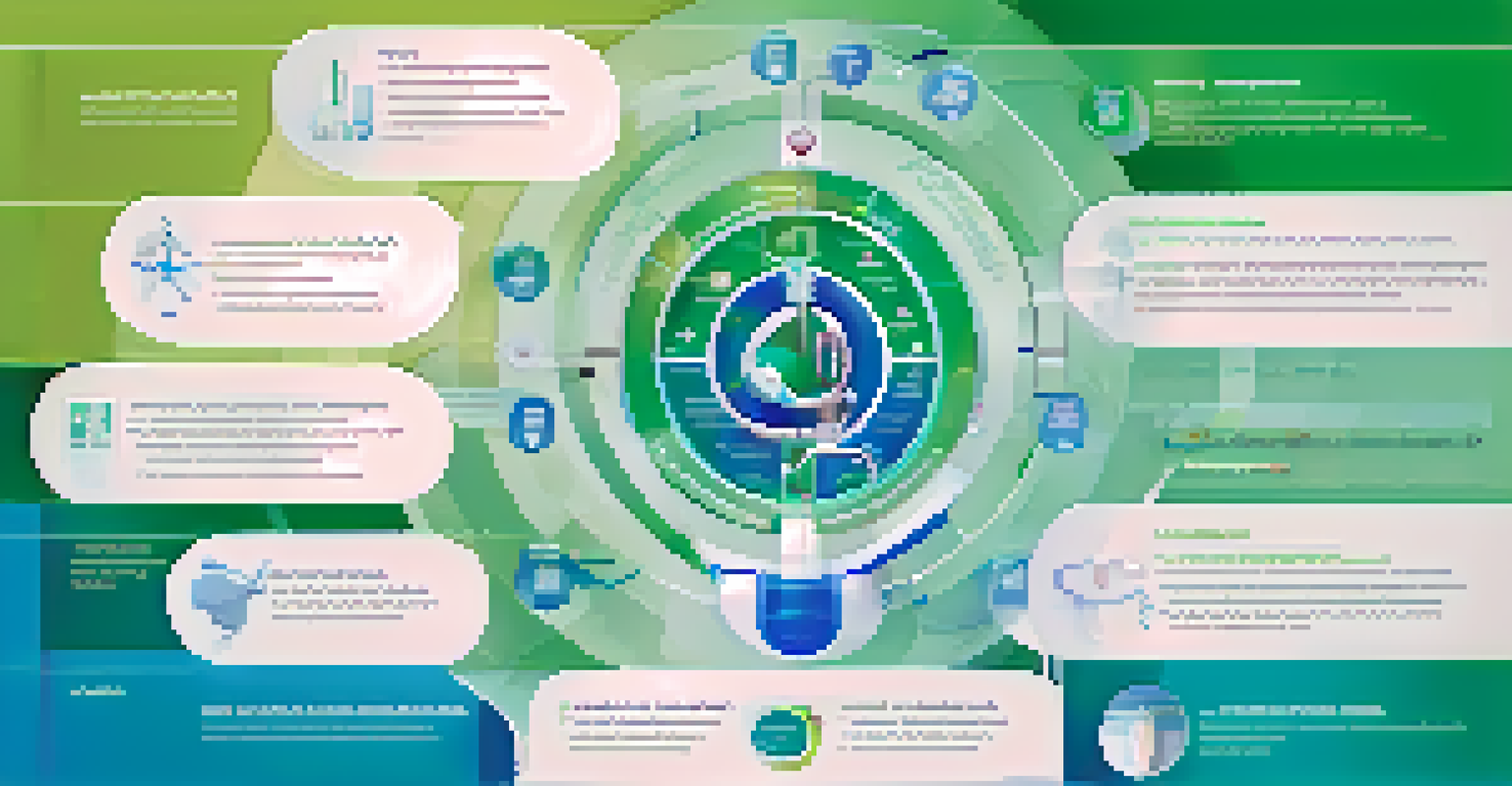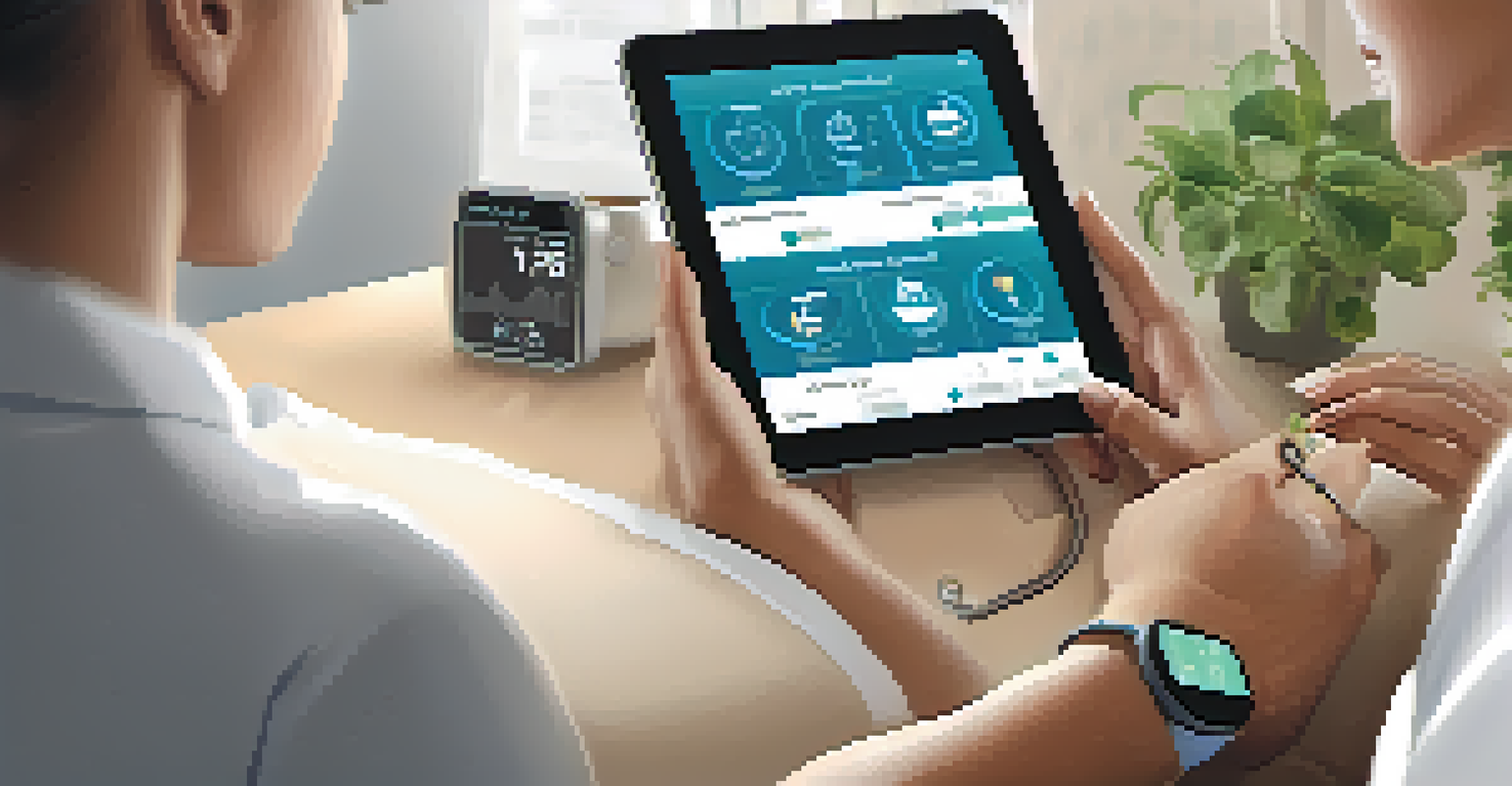Translational Medicine: Bridging Bench Research to Bedside Care

Understanding Translational Medicine and Its Importance
Translational medicine serves as a vital bridge between basic scientific research and practical clinical applications. It aims to translate findings from the laboratory into innovative treatments that can improve patient care. By doing so, it transforms theoretical knowledge into tangible solutions that address real-world health issues.
Translational medicine is the bridge between the bench and the bedside.
The importance of translational medicine lies in its potential to reduce the time it takes for research discoveries to reach the bedside. For example, a new drug developed in the lab can take over a decade to gain approval and become available to patients. Translational medicine streamlines this process, ensuring that breakthroughs in research can be efficiently and safely implemented in clinical settings.
Moreover, translational medicine promotes a collaborative approach, bringing together researchers, clinicians, and patients. This synergy allows for more comprehensive research that considers the needs and experiences of those directly affected by health conditions, ultimately leading to better outcomes.
The Stages of Translational Medicine: A Step-by-Step Process
Translational medicine can be broken down into several key stages, each critical to the journey from lab to patient. These stages include discovery, development, and dissemination. Understanding these phases helps clarify how research evolves into practical applications.

In the discovery phase, researchers identify potential targets for new therapies, often using model organisms or cell lines. Once a promising candidate is found, the development stage begins, where preclinical studies are conducted to test safety and efficacy. This rigorous process is essential to ensure that any new intervention is safe for human use.
Translational Medicine Bridges Research
Translational medicine connects scientific discoveries with clinical applications, enhancing patient care through innovative treatments.
Finally, the dissemination stage involves clinical trials and regulatory approvals before the treatment becomes available to patients. This stage is crucial, as it not only assesses the effectiveness of the new therapy but also determines how it fits into existing healthcare practices.
Real-World Examples of Successful Translational Medicine
One of the most notable examples of translational medicine is the development of monoclonal antibodies for treating various diseases, including cancer and autoimmune disorders. Researchers first discovered these antibodies in the lab, and over time, they were successfully translated into therapies that have significantly improved patient outcomes.
The greatest advances in medicine are often achieved through collaboration between scientists, researchers, and clinicians.
Another example is the rapid development of COVID-19 vaccines. Researchers utilized existing knowledge about mRNA technology, which had been under investigation for years, to create effective vaccines in record time. This situation highlighted how translational medicine can adapt and respond to urgent health crises.
These examples showcase the immense potential of translational medicine to bring forth innovative treatments that can change lives. They also illustrate the importance of a well-coordinated approach to research, development, and clinical practice in achieving health advancements.
Challenges Facing Translational Medicine Today
Despite its promise, translational medicine faces several challenges that can impede progress. One significant hurdle is the gap between laboratory discoveries and clinical applications, often referred to as the 'valley of death.' This term describes the difficulties researchers encounter in securing funding and support to take their findings to trial.
Another challenge is the complexity of human biology, which can vary widely between individuals. Factors such as genetics, environment, and lifestyle all play a role in how a treatment may work for one person versus another. This variability can complicate the translation process and necessitates more personalized approaches to medicine.
Collaboration Boosts Medical Innovation
Effective collaboration among researchers, clinicians, and patients is essential for overcoming challenges and advancing healthcare solutions.
Finally, regulatory hurdles can slow down the adoption of new therapies. Navigating the approval process can be time-consuming and costly, which may deter researchers and companies from pursuing promising innovations.
The Role of Technology in Advancing Translational Medicine
Advancements in technology have significantly boosted the field of translational medicine. Tools such as artificial intelligence and machine learning are increasingly used to analyze vast amounts of data, helping researchers identify patterns and predict outcomes more efficiently. This technology enables faster decision-making in both research and clinical settings.
Additionally, digital health technologies, including wearable devices and telemedicine, have transformed how patients and providers interact. These tools facilitate real-time monitoring and data collection, which can inform research and lead to more tailored and effective treatments. The integration of patient feedback into the research process is another win for translational medicine.
Ultimately, technology serves as a catalyst for innovation in translational medicine, enhancing our ability to translate discoveries into effective interventions. As technology continues to evolve, so too will the potential for groundbreaking advancements in patient care.
The Importance of Collaboration in Translational Medicine
Collaboration is at the heart of successful translational medicine. By working together, researchers, clinicians, and industry partners can share knowledge, resources, and expertise that enhance the research process. This teamwork fosters innovation and leads to more comprehensive approaches to addressing health challenges.
For instance, partnerships between academic institutions and pharmaceutical companies can streamline the development of new therapies. These collaborations allow for more robust preclinical testing and the sharing of financial burdens, ultimately speeding up the journey from lab to clinic.
Technology Drives Future Healthcare
Advancements in technology, such as AI and genomics, are revolutionizing translational medicine by enabling personalized and effective treatments.
Furthermore, involving patients in the research process is crucial. Their insights can help shape research priorities and ensure that new treatments align with their needs and experiences. This patient-centered approach enhances the relevance and effectiveness of translational medicine.
Future Directions for Translational Medicine
The future of translational medicine looks promising, with ongoing advancements in research methodologies and technologies. One area of focus is personalized medicine, which tailors treatments to individual patient profiles. This approach holds the potential to enhance treatment efficacy and minimize side effects, making healthcare more effective.
Moreover, the integration of genomics and biotechnology into clinical practice offers exciting possibilities. As we learn more about the human genome, we can develop more targeted therapies that address the underlying causes of diseases, rather than just their symptoms. This shift could revolutionize how we approach treatment.

As translational medicine continues to evolve, fostering a culture of innovation and collaboration will be essential. By breaking down silos between different sectors of healthcare and prioritizing patient involvement, we can pave the way for groundbreaking advancements that improve patient care for generations to come.